When Oliver Hazard Perry defeated the British Squadron in September of 1813 it not only cut the British off from additional troops and supplies coming from the eastern parts of Upper Canada, but it also removed the key supply route up the Detroit River to the distant outpost at Fort Mackinac. By 1813 the British had moved all their northern operations to Fort Mackinac, leaving the old Fort St. Joseph in the hands of the Northwest Company, protected by the local militia. However when William Henry Harrison liberated Detroit, occupied Amherstburg and defeated Procter and Tecumseh at the Battle of the Thames, his eye turned towards Mackinac Island, but it was too late in the year to organize an expedition into the north, so the American’s waited. But the British could not wait, with supplies cut off, and the only British ship on the lake, the HMS Nancy laid up for repairs on St. Joseph Island, it was determined that a new overland route to the north and naval base be established. Under orders, Lieutenant Colonel Robert McDouall of the Glengarry Light Infantry of Fencibles was chosen to lead the expedition. Joining him were 90 men from the Royal Newfoundland Regiment, 21 Royal Navy Sailors (bound for the Nancy), 11 Royal Artillery Gunners with four field guns, and 30 carpenters to aid in the construction of bateaux and begin work on a new naval base on Georgian Bay.
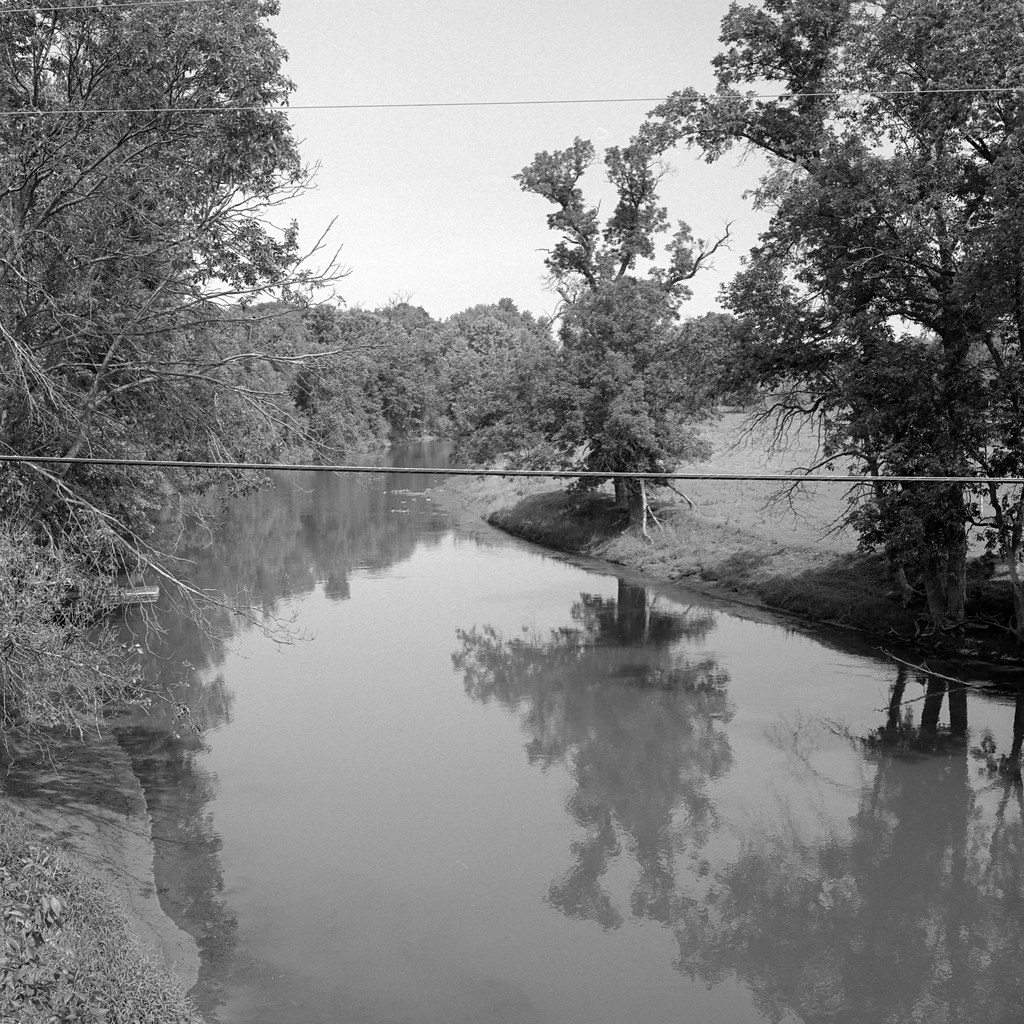
Rolleiflex 2.8F – Carl Zeiss Planar 80mm 1:2.8 – Kodak Tri-X 400 – Kodak Xtol (1+1) 9:00 @ 20C
McDouall left the town of York in February 1814, pushing Yonge Street north through the cold winter, extending the road up to Lake Simcoe. The expedition headed north meeting up with the Nottawasaga River (approximately 17km east of the modern town of Stayner) arriving in late March construction of the bateaux began in earnest as the river began to thaw. McDoull launched his small flotilla on the 19th of April, reaching the open waters of Lake Huron on the 25th. He reached Mackinac Island on the 18th of May, much to the relief of the garrison and the commander, Captain Robert Bullock of the 41st Regiment who had been on half-rations since the end of the winter, and relying heavily on locally grown food and fish. McDouall had only lost one boat on the journey. His first order of business was to establish stronger defences on the island. A new fort was established on the high ground where Robarts had captured the island from in 1812. Fort George consisted of a single blockhouse and simple stockade mounting the four guns McDouall brought along.

Rolleiflex 2.8F – Carl Zeiss Planar 80mm 1:2.8 – Kodak TMax 100 (100TMX) – Kodak D-76 (1+1) 9:30 @ 20C
But McDouall wasn’t the only one making preparations at Detroit a squadron of five ships under Captain Arthur Sinclair, and a force of 750 infantry troops from the 17th, 19th, and 24th US Infantries under Lieutenant-Colonel George Croghan, and a body of Ohio Militia under Major Andrew Holmes. They departed from Detroit on the 3rd of July and headed north. However Sinclair had received word of the new British establishment on Lake Huron and the lone British supply ship, the Nancy, making runs between the new base and the fort. The effort was futile so the squadron turned north heading for the old British outpost on St. Joseph Island. Arriving on the 13th of July and finding it abandoned the American forces proceeded to burn the abandoned fort then moved onto St. Mary’s destroying most of the Northwest Company’s buildings there on the 14th. These actions sent the local militia running to Fort Mackinac giving McDouall enough warning to position his troops to defend the island because it was clear Sinclair was heading there next.
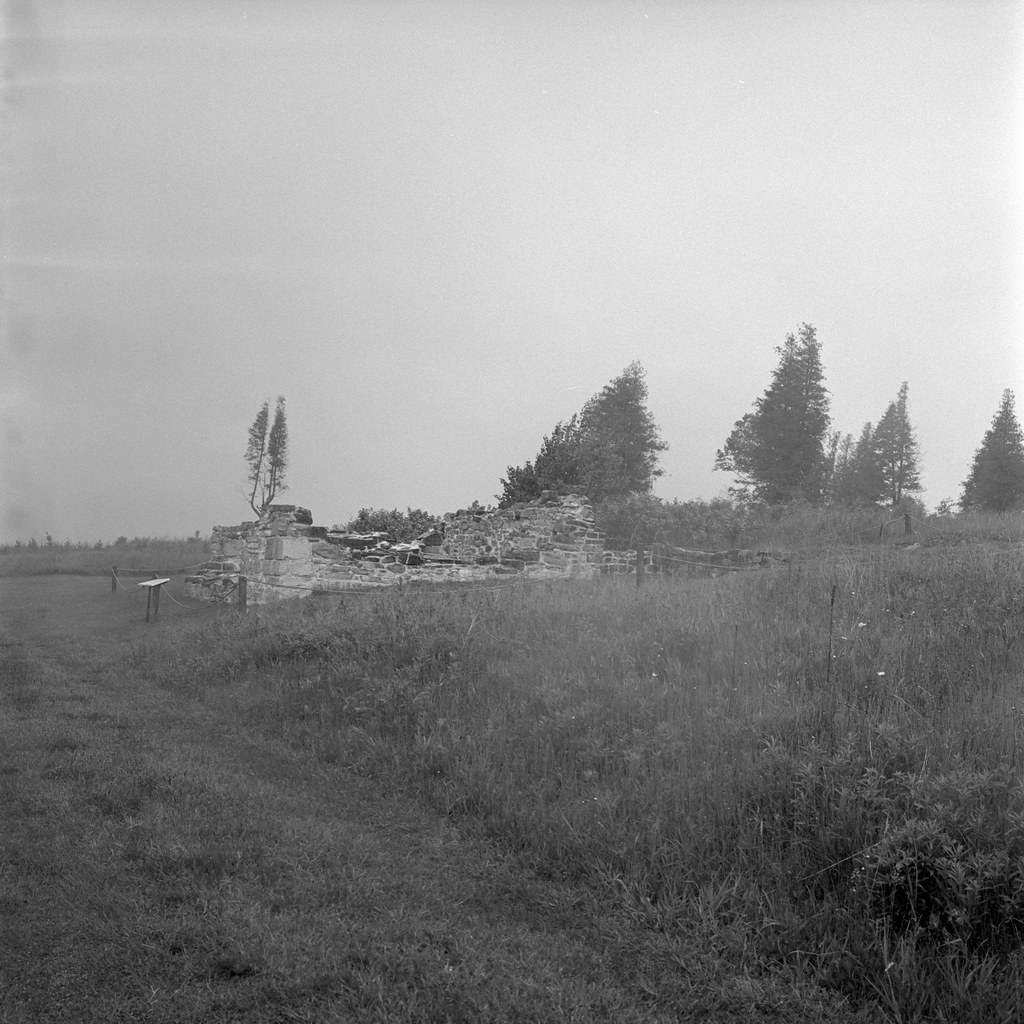
Rolleiflex 2.8F – Carl Zeiss Planar 80mm 1:2.8 – Kodak Tri-X 400 – Kodak Xtol (1+1) 9:00 @ 20C
Sinclair’s squadron arrived off the island on the 26th of July and began a naval bombardment of both Fort Mackinac and Fort George. But the ships were not equipped for such a bombardment, most of the shots landing harmlessly in the gardens surrounding the fort. When a dense fog rolled in, Sinclair was forced to move back out into open water. This gave McDouall time to re-position his troops knowing that the Americans the only option is a land assault of the island. He also guessed that the Americans would land in the same place that the British had two years prior. Leaving the militia to watch the two forts, McDouall positioned the regular troops (Royal Newfoundlanders, 41st of Foot, 10th RVB, and the locally raised Michigan Fencibles) and native warriors by the woods at the base of the high ground along with two field guns.
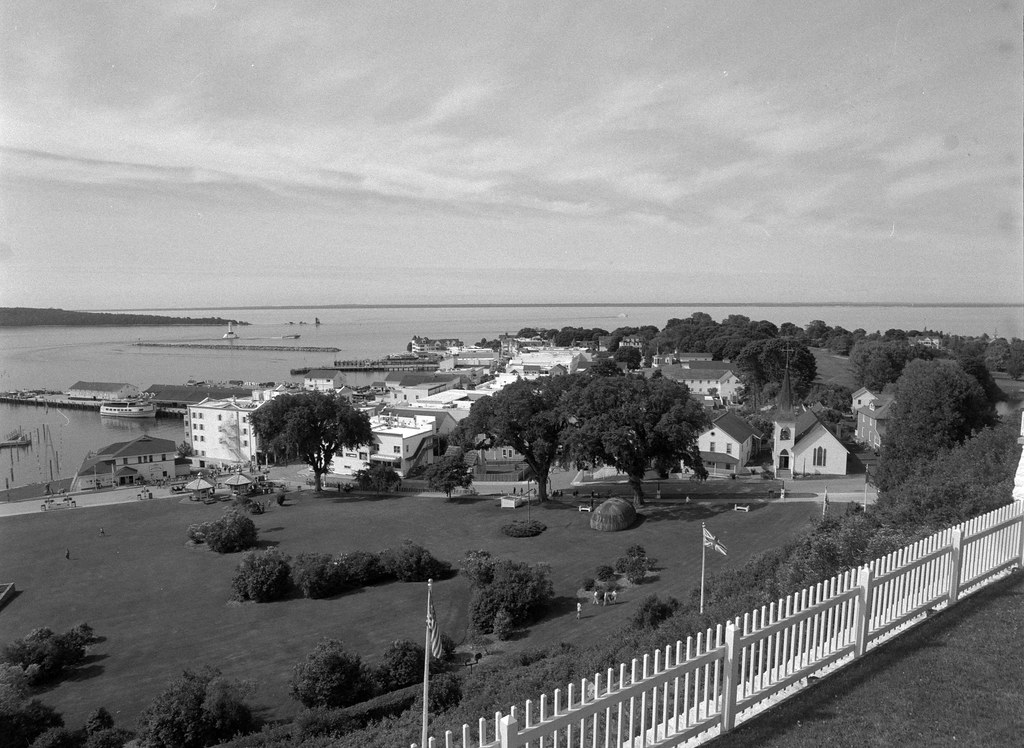
Mamiya m645 – Mamiya-Sekor C 35mm 1:3.5 N – Kodak Plus-X 125 – Blazinal (1+25) 6:00 @ 20C
When the fog finally lifted, on the 4th of August Sinclair’s boats bombarded the woods at the north of the island to kill or force any natives that would be hiding there out before landing Croghan’s force on the island, exactly where McDouall had predicted. Croghan’s forces moved slowly through the woods, the militia forming the centre with the regulars on the flanks, when they emerged from the woods, the pre-sighted British guns opened fire on the surprised Americans. Croghan redeployed, but the movement was slow and tricky because of the rough terrain. Sending the Militia to engage the British left flank and the regulars to engage the right hoping to outflank the entire position. They nearly had a chance, when McDouall received a report of the second body of American forces landed, sent the Michigan Fencibles and Royal Newfoundlanders to engage them. The American regulars were quickly ambushed by the native warriors, and soon the regular forces returned finding the landing report false. With casualties mounting, and Major Holmes dead, Croghan quickly pulled his force back to the woods and off the island, counting 19 dead and 45 wounded. The British suffered no casualties.
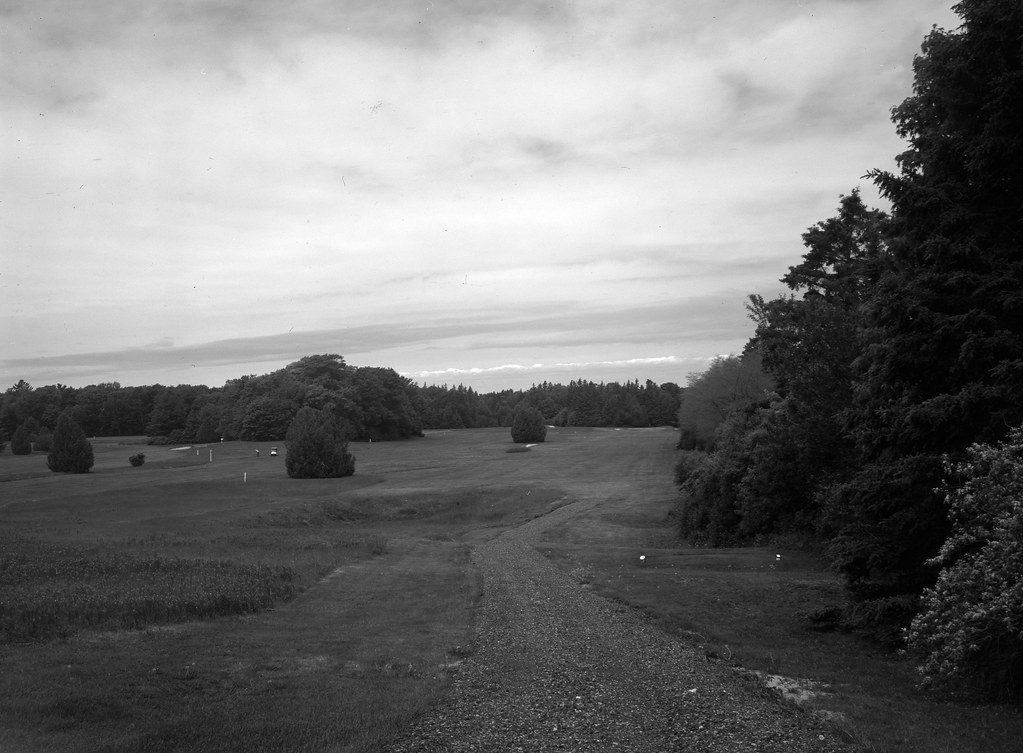
Modified Anniversary Speed Graphic – Fuji Fujinon-W 1:5.6/125 (Orange-22) – Efke PL25 – PMK Pyro (1+2+100) 7:30 @ 20C
While McDouall managed to drive the invasion force off the island, the island was still a target, and Sinclair had other ways to drive the British off the island. Today the battleground is a golf course. Fort George remains on the high ground, renamed Fort Holmes after Major Andrew Holmes when the Americans returned to the island in May of 1815. Fort St. Joseph remained untouched for over 100 years as the British opted to first reestablish a garrison on Drummond Island until moving to the Naval Establishment at Penetanguishene in 1828. The Americans continued to operate a military garrison at Fort Mackinac until 1895 and the British at Penetanguishene until 1856. Fort St. Joseph, Fort Mackinac, Fort Holmes, and the establishment at Penetanguishene are all open to the public as living history museums.
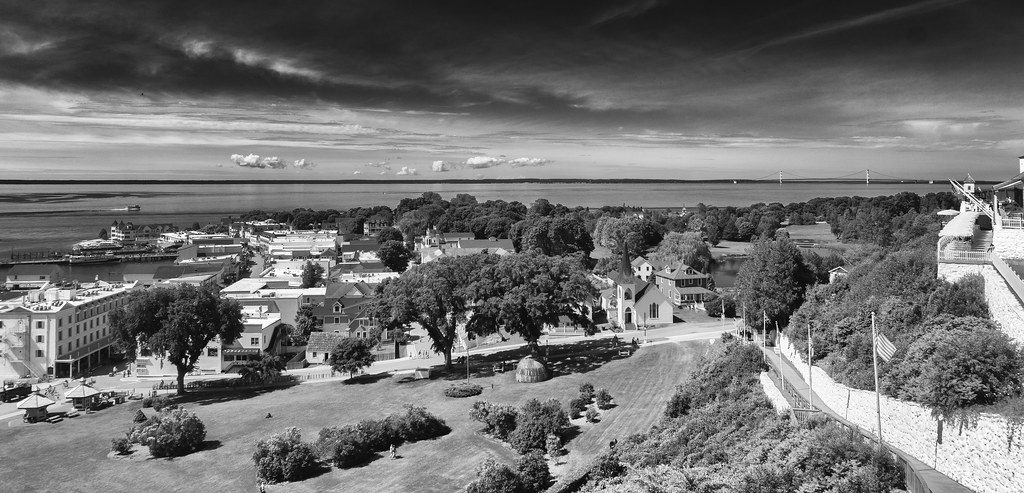
Sony a6000 – Sony E PZ 16-50mm 1:3.5-5.6 OSS
Written With Files From:
Guidebook to the Historic Sites of the War of 1812 Second Edition by Gilbert Collins – 2006 The Dundurn Group Publishers
Web: www.eighteentwelve.ca/?q=eng/Topic/13
Web: war1812.tripod.com/batmac1814.html
Web: www.algoma1812.ca/History/Chronology.aspx